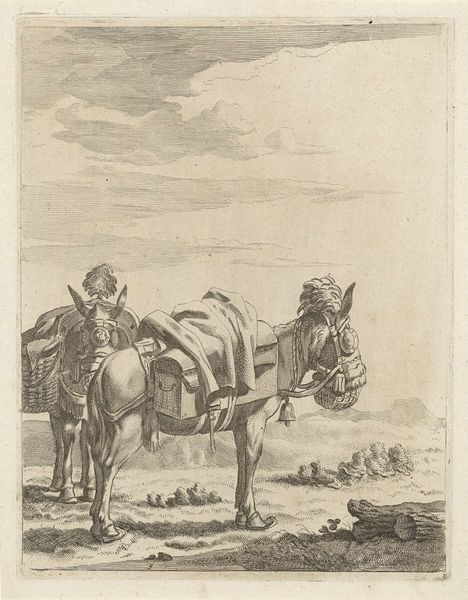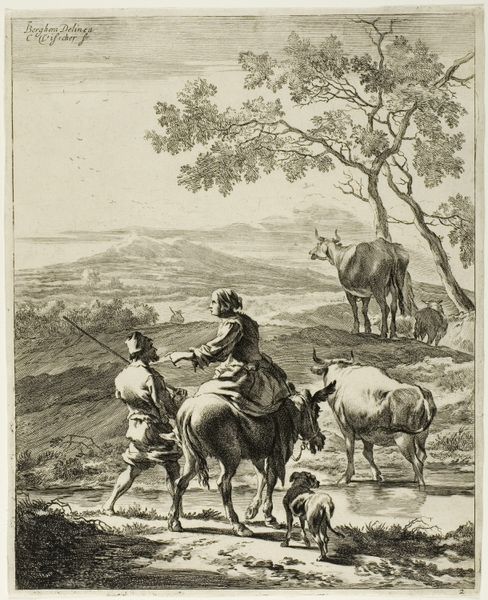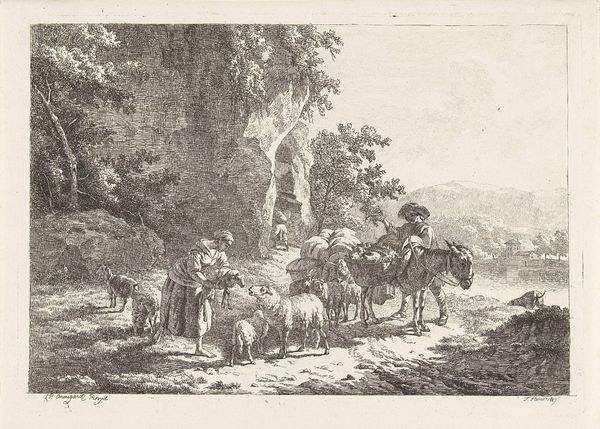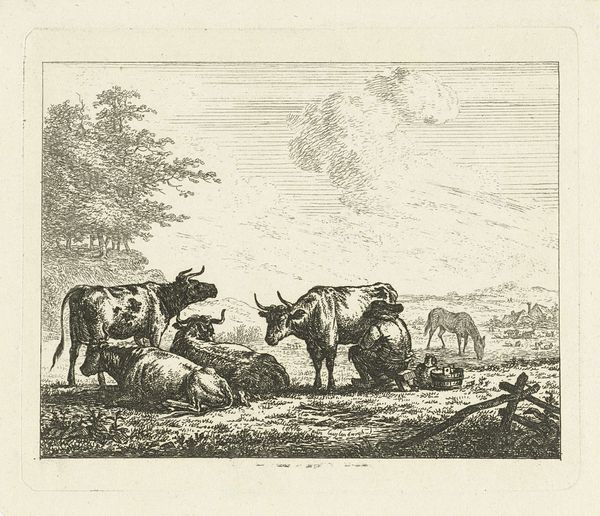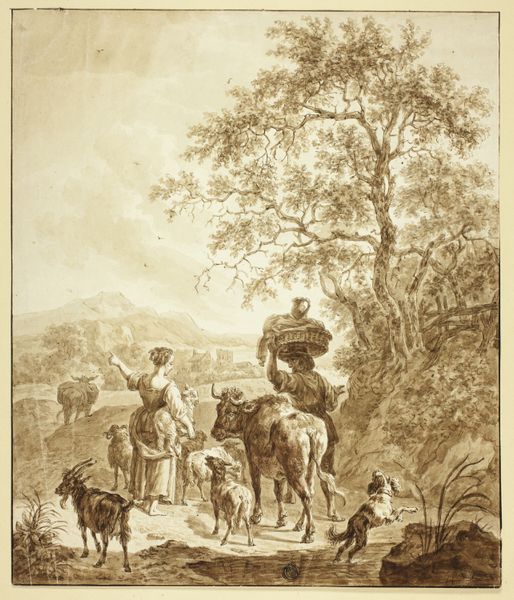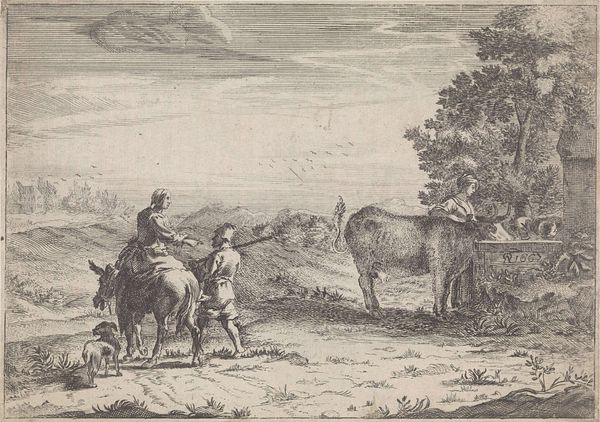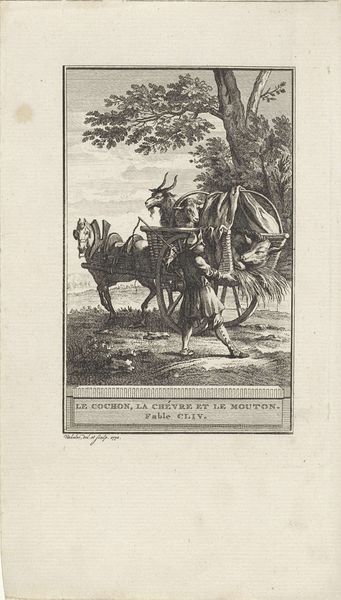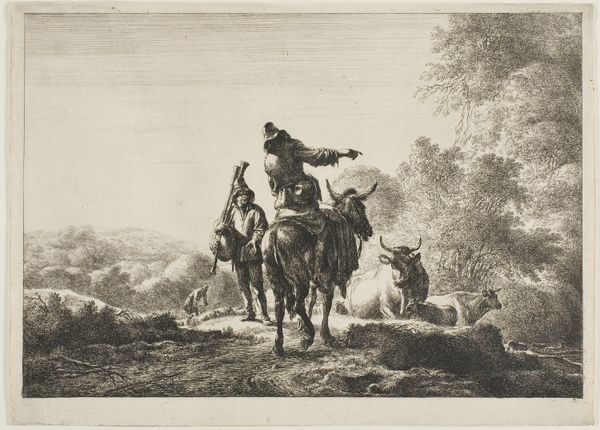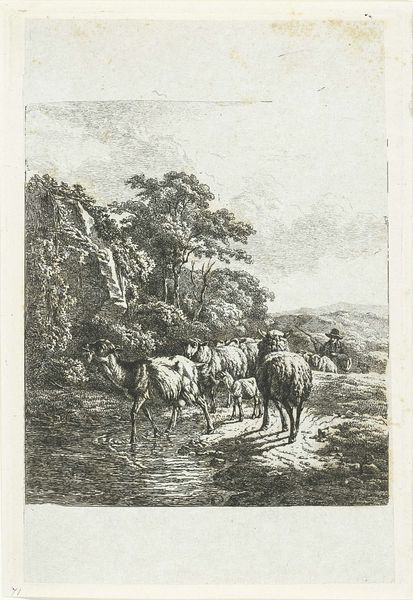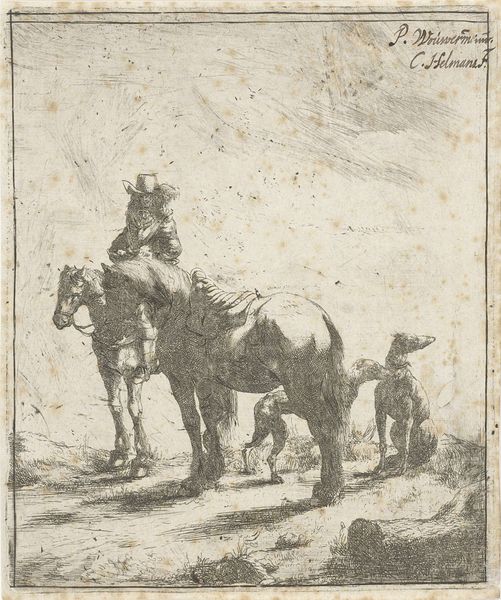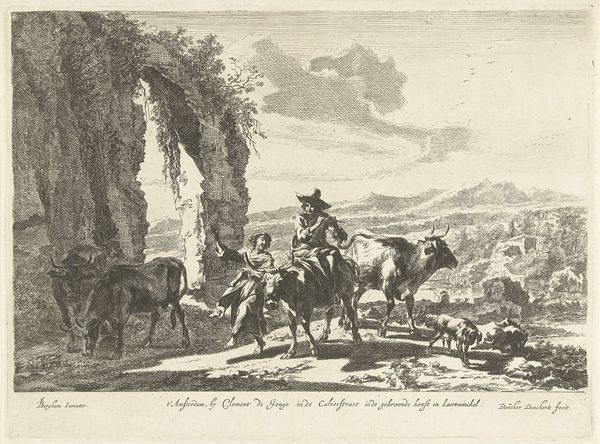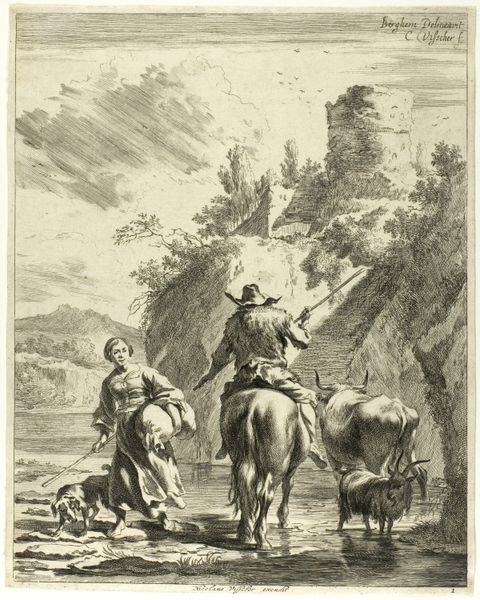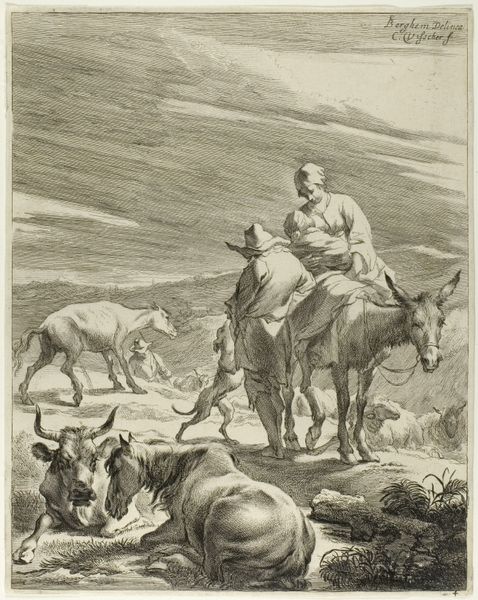
etching
#
etching
#
landscape
#
genre-painting
Dimensions: height 190 mm, width 130 mm
Copyright: Rijks Museum: Open Domain
Editor: This is Frédéric Thèodore Faber’s 1837 etching, "Herderin zittend op ezel temidden van kudde" - A Shepherdess sitting on a donkey amidst a herd. It's held at the Rijksmuseum. The texture achieved with the etching is incredible, it’s delicate and rustic all at once. How do you read the social implications of a piece like this? Curator: This piece speaks to the 19th-century fascination with the "natural" life and the idealization of rural existence. Notice the serene shepherdess; how does her seemingly unburdened state contrast with the realities of rural labor at that time? The popularity of such images speaks to an urban, often bourgeois, desire for a simpler life, far removed from industrializing cities. This imagery, of course, frequently glossed over the hardship faced by those who actually lived that life. Editor: So, it’s more about what city dwellers *wanted* rural life to be, rather than what it actually *was*? Curator: Precisely. Genre paintings like this were frequently consumed by an audience craving an escape, however fictional, from the pressures of modernity. The presence of this imagery normalizes that cultural viewpoint. How do you think the medium of etching – reproducible and relatively affordable – further shaped the work’s reception? Editor: Well, the etching process would certainly enable its broader distribution, amplifying the reach of the romanticized, albeit distorted, view of the countryside. Curator: Exactly. It democratized access to this ideal, solidifying it within the broader visual culture of the time. It raises important questions about whose stories get told, and by whom, as well as the role of art in perpetuating certain societal narratives. Editor: That’s a really important point – I'll definitely look at these scenes differently from now on! Thank you for illuminating the layers of context within this piece. Curator: My pleasure. Remember to consider not only the image itself, but also its journey through different social and historical contexts. That's where the real insights often lie.
Comments
No comments
Be the first to comment and join the conversation on the ultimate creative platform.
